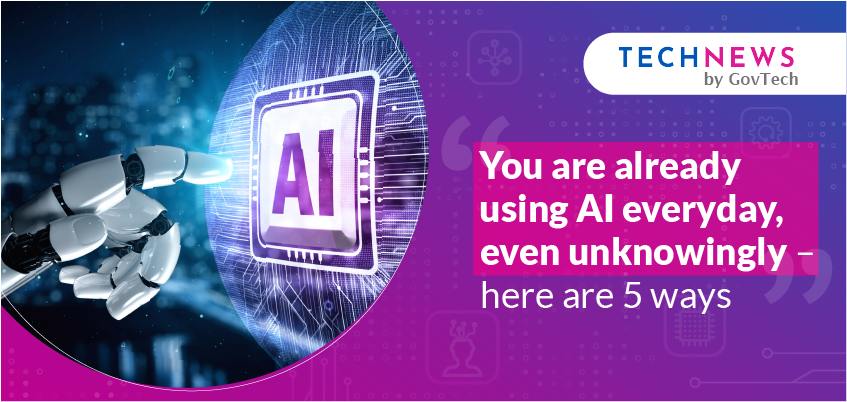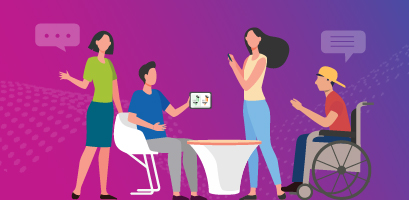Five Ways You’re Already Using AI

When Google announced in May this year that it was infusing artificial intelligence into its search engine to generate AI-powered summaries, it took just a week for embarrassing errors — such as recommending glue as part of a pizza recipe — to cause a furore online. Less than a month later, the product was quietly scaled back.
AI Overviews, as the new feature is known, would have represented one of the most prominent ways AI is entering our daily lives. Not for nothing is “Google” a common verb now and to see AI-generated text every time we look for information would have been pretty in-your-face.
But even with this setback, AI has already inexorably been infused into many of our interactions with technology. Here are some ways that you are, perhaps unknowingly, using AI in your everyday habits.
-
Search (on non-Google platforms)
-
Predictive text in email
-
Translation services
-
Automatic categorisation of your smart device’s photos
-
Recommendations determined by algorithms
1. Search (on non-Google platforms)
In some ways, Google was trying to play catch up with AI Overviews, as other platforms have already incorporated AI into their search engines, including the public sector’s whole-of-government search tool.
For instance, Microsoft added AI to Bing way back in February 2023, just two months after ChatGPT was released. This product was later relaunched as Copilot, a search engine that works like a chatbot, replying with fully formed sentences that are annotated with web links.
Even the search bar in Meta’s apps (Facebook, WhatsApp, Instagram, and Messenger) now work with Meta AI. One usually associates search in WhatsApp with trawling through your texting history, but now you can type questions like “what to do in London”, and Meta AI will generate a response in a chat thread.
As for the Government, public sector websites can now integrate GovTech's SearchSG, a search engine powered by machine learning that enhances citizens' search experience and discoverability of government information and services. For example, the tool has a SmartFinder function, a smart widget that replaces the conventional "Control + F" page search, displaying interactive AI-generated page summaries, FAQs and cross-agency recommendations along with page search results.
Citizens will also have a bird's eye view of important information via the SmartSnippet, which auto extracts snippets from the most relevant documents and FAQs on the results page.
To reduce the need for citizens to sift through numerous web results, SearchSG also has a Large Language Modelling-backed SmartAnswer feature that is able to provide concise and customised responses to search queries, supported with citations to ensure credibility and accuracy.
It is not just large and established organisations that are revolutionising search. Search engines that are based entirely on AI have also sprouted, again offering the user experience of search results in the form of annotated paragraphs. While Google remains the most dominant search platform by far, its AI Overviews push can be seen as an acknowledgement that AI-powered search is likelier than not to become a big thing in our lives.
2. Predictive text in email
Emails are an inescapable part of work and personal life, and if you use Gmail, chances are you’ve seen suggested words and phrases pop up in grey in front of your cursor. Just as you’ve typed “I hope this email”, “finds you well” appears as suggestions and all you have to do is hit “tab” to use those words.
Google's Smart Compose function is powered by machine learning, a technique that enables computers to learn through examples in an automated manner. It’s also what powers AI as we know it today.
Google's Smart Compose has been around since 2018, way before AI became such a buzzword. In other words, many of us had already been using AI before AI became a thing.
3. Translation services
Remember the time when Google Translate suddenly became uncannily polished? Before 2016, outputs from the service were characterised by awkward phrasing, garbled grammar, and literal word-for-word translations that were dead giveaways of a machine’s work.
Then, seemingly overnight, Google Translate became capable of translating long passages that were not just error-free (or close) but also with a nimbleness in capturing nuances of the original writing.
What changed? Machine learning had been introduced into Google Translate, taking over from rules-based programming. So instead of coding a condition that “raining cats and dogs” refers to heavy rain and not animals falling from the sky, the computer was simply left to figure it out after being fed thousands of examples of how “raining cats and dogs” was used in different pieces of writing.
Translation services are also embedded in social media nowadays. See a comment or photo caption in a language other than English? There’s usually a “translate” button you can tap to instantly see the English equivalent.
This form of machine learning, known as natural language processing, is also what is behind Google's Smart Compose and ChatGPT. Such tools have proved useful for a myriad of professions and the Government also launched its own chatbot called Pair Chat, a secure version of ChatGPT for government officers. Pair has the added advantage of being built specifically to understand the context of Singapore’s Government and provide even more useful responses based on its specialised knowledge.
4. Automatic categorisation of your smart device’s photos
Open the app where your photos and videos are stored on your smart device. Chances are, you’ll find your photos already automatically categorised into groups such as art, food, and mountains. For those of you with kids, baby is another category that’s sure to pop up.
And, of course, the people in your images are also automatically identified and grouped together so that you can easily find photos of yourself, your spouse, or any particular person who appears enough in your snapshots.
Such convenience is made possible by computer vision, a form of machine learning that enables computers to identify elements in images and videos. Computer vision is also what drives self-driving cars by enabling them to “see” road conditions.
5. Recommendations determined by algorithms
Whenever you load your favourite streaming service, you see a bunch of programmes that somehow fit your taste for rom-coms and police procedurals. Open your preferred e-commerce site, and the latest video game console, along with all the must-have accessories, are already awaiting you on the home screen.
Or perhaps you’re looking for your next career move? Over at the MyCareersFuture job portal, jobs that match your experience and professional profile continually surface while you browse the different positions available.
These recommendations are made possible by algorithms that take in factors like your past views and purchases, browsing history, and other forms of digital trails you’ve left behind. The algorithms – yes, once again, they fall under machine learning – then find products that are similar to what you like for recommendation.
Because these suggestions are constantly changing according to your behaviour, the system is “intelligent” and able to mould itself to your shifting preferences.
In the case of My Careers Future, its recommendation system is powered by 10 different AI models to improve job matching.
AI is already in your life
As you can see, AI is no longer something that you have to actively seek out to use. Instead, it’s already deeply embedded into pieces of technology that you are likely to use every day. GovTech is also proactively leading efforts to use AI to improve government digital services and improve the lives of all who live here.
With Elon Musk’s AI startup raising $6 billion last month, the AI race is only getting hotter. While no one can say for sure what the next AI products will look like, it’s safe to say that AI’s impact on our lives, in ways big and small, will get larger.



